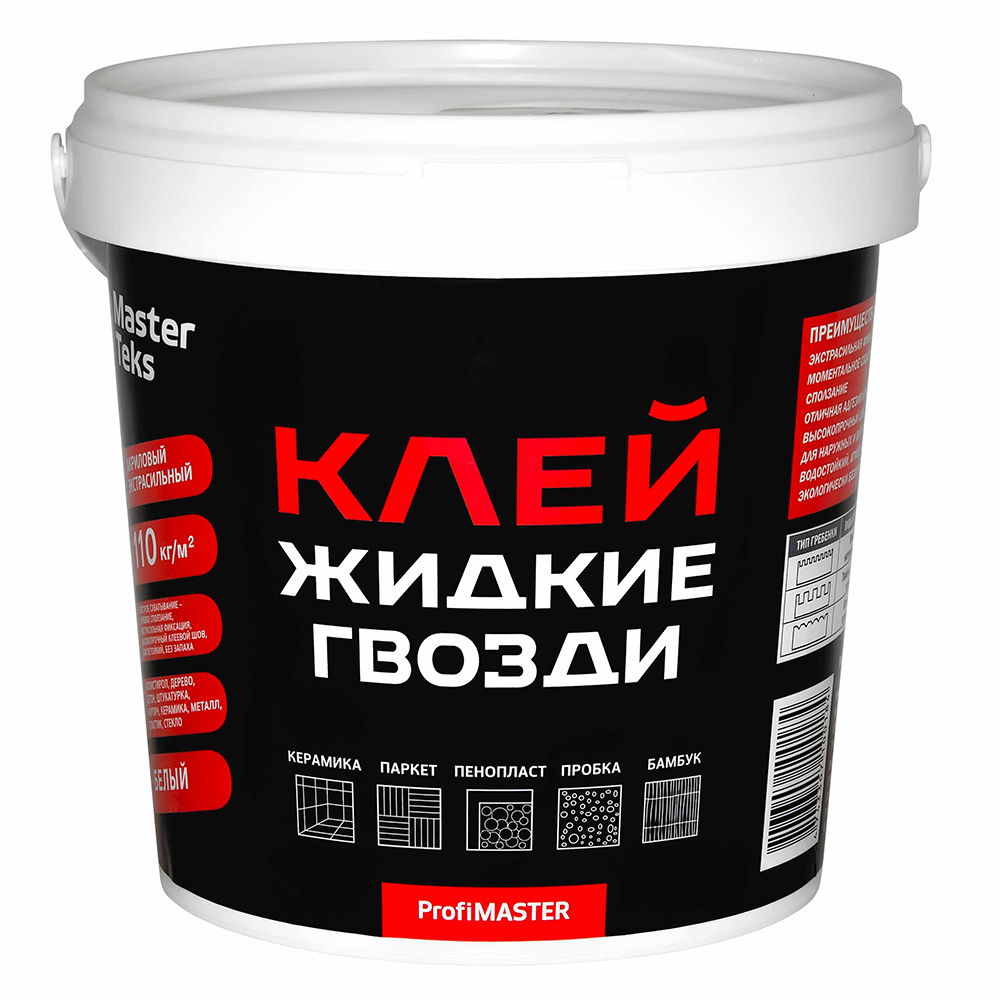Фото: baza-bsm.ru
INCREASING OF ADHESION STRENGTH AND ESTIMATION OF SURFACE OF CONTACT BETWEEN TWO BODIES
Yu. M. Evdokimov (1), Figovsky Oleg (2), N.V. Sulimenko (1), N.P. Akentieva (3,4) , P.V. Komrakov(1), Yu.V. Belousov (5)
1- State Fire Academy of EMERCOM of Russia, Moscow, Russia
2- IAI, Israil
3- Institute of Problems of Chemical Physics Russian Academy of Sciences, Chernogolovka, Moscow Region, Russia.
4- Scientific-educational center «Medical chemistry» of the Moscow State Regional University, Chernogolovka, Moscow Region, Russia
5- Bauman Moscow State University, Russia
e-mail: evdokur@mail.ru; na_aken@mail.ru
We consider approaches to estimating the true area of adhesive contact, taking into account the multitude of levels of surface hierarchy (roughness) of substrates of solids and characteristics of liquid adhesives in contact with them.
Key words: work of adhesion, increase of adhesion strength, true and apparent contact area (visually observed), surface profiles.
Introduction
The patterns of formation and destruction of adhesive contacts are described on the basis of molecular kinetic and thermodynamic approaches [1–16]. Within the framework of the first of these, the properties of adhesives and substrates (strength characteristics, viscosity of adhesives, dependence of contact conditions on changes in viscosity, temperature, pressure, contact duration) are considered. In the second case, emphasis is placed on consideration of energy characteristics (surface energy of adhesive, and interfacial boundaries), wetting processes. The formation of interfacial co-contact is determined by the contact area (nominal, actual, and real molecular). Contact acceleration is accelerated by increasing the pressure, the duration of the contact and reducing the viscosity of the liquid (adhesives, fire extinguishing compositions, which may be water, various foams, and sprayed liquids).
The same effect can be achieved by adding surface-active substances (surfactants) to the system, exposure to external electric fields, removing various organic pollutants and oxide films from the surface of the contact.
Adhesive strength (AS), expressed by the specific work expended on the destruction of adhesive contact (AC), is determined by the value of the original contact surface Su, the number and energy of adhesive bonds arising between the materials on the contact surface. Naturally, Su will noticeably depend on the porosity of the bodies (wood, polymers, glass), the shape of the pores, their number and size. Therefore, the evaluation of Su is difficult, taking into account the complex hierarchy of the substrate surface (Fig. 1) [2, 3, 7–9]. You can try to simplify the problem by considering the estimate of Su and for ideally highly adherent (atomically smooth) surfaces, for example, freshly split mica surfaces and highly oriented pyrolytic graphite (HOPG) whose irregularities correspond to the size of atoms on the surface (Fig. 2). For their contact with water molecules, for example, it is possible to calculate the number of water molecules per unit area (1 cm2), given that the water molecule has a diameter of 0.286 nm. The adhesion of water molecules to the glass surface can be measured by detaching the glass substrate from the water surface or to evaluate by equation Dupre -Young, for example [15-16].
As for the freshly formed surfaces of micas (juveniles) or smooth polished metal plates, they adhere even without the use of adhesives, as can be seen by rubbing the polished Iohansson plates together (a roughness of about 50 nm). The split mica marks of muscovite and phlogopite, for example, are also linked again, slightly pressed to each other. Moreover, freshly split mica surfaces of various grades (phlogopite + muscovite) are firmly bonded, because for very smooth surfaces the conditions are preserved for achieving molecular contact when they are squeezed [3, 15–16] (the first — the surfaces of the leaves of mica in air and in vacuum were held back in the 30s of the last century by I.V. Obreimov and B.V. Derjaguin). G. Upit and co-authors went further [17]. They developed the production of juvenile surfaces of various metals (Fig. 3) and investigated their interaction during multiple destruction-restoration of cohesive strength. Our experiments to show, that juvenile surfaces phlogopite + muscovite good adhered and AS on delamination to accessible about 1,0 J/m2 by speed of peel 0,01 m/s. It is come up with cohesion strength for mica with lesser strength — 1,1 J/m2 for muscovite.
On the other hand, on contact of a nano droplet with a solid, it would seem that the true contact area approaches zero (contact at a point). Although under strict consideration due to its own weight a drop of liquid flattens [16], a “contact patch” is formed. Moreover, the evaluation of Su is difficult on real surfaces (Figs. 4-5), since high- and low-viscosity adhesives can penetrate large irregularities, and low-viscosity adheres to small irregularities. Considering that this process depends on the temperature, applied pressure and duration of exposure; the picture of estimating the area of the interface (unity) becomes extremely complex. This problem not became simple and for systems solid body-solid body (Fig. 5) [18]. This is aggravated by the fact that, according to the views of the crystallographer R. Galiulin, the interface is fractal. And fractal lines (fractals from the Latin, Fractus — fractional, broken, consisting of fragments) are geometric figures with a fractional metric dimension, or with a metric dimension other than topological, possessing the property of self-similarity, are not estimated as long and fractal dimension. Taking into account the scale invariance of fractals (self-similarity), it is almost impossible to calculate the true surface area, since the scale of the map (in our case, the “relief” of the surface) on which it is measured contributes.
What to do with the assessment of the true contact area for different systems? The surface structure represents a new state of aggregation of the substance, and the surface itself can be regarded as a fatal defect. Consideration of various models does not always facilitate the task, as according to academician A.N. Krylov: “No mathematical solution can be more precise than the original assumptions underlying it”. Is it all so hopeless?
Using the example of a two-layer film material, they showed that Su is a function of time and temperature and can be determined by the law of adhesive wicking into the pores, and found their calculations true for the case of adhesive deposition on aluminum foil. L. Varepo and coauthors [7] developed these results in their studies and developed an approach to calculating the surface area of adhesive contact when the adhesive (printing ink) interacts with the substrate (aluminum foil, laminated paper) taking into account the real surface profile and porous substrate. The solution of the problem is performed on the basis of mathematical analysis methods (Fourier transform). It was taken into account that the aluminum foil is covered with an oxide film, which accurately reproduces the micro the relief of aluminum foil, the surface layer of which has cylindrical pores [13], which are also involved in the formation of the true surface of the contact between the adhesive and the substrate. The contact area for the pore (S) was estimated, which turned out to be proportional to the pore diameter and the depth of adhesive flowing into the pore.
Further calculations made it possible to calculate the total true contact surface per 1 cm2 of aluminum foil area with adhesive (printing ink) depending on the number of pores per 1 cm2 of surface, pore diameter, contact time, adhesive viscosity and pressure, under the influence of which the adhesive flows substrate micropores. But despite the fact that many factors are taken into account, the presented calculations [7] can still be considered approximate, as indicated by the authors themselves, saying that the discussion in question is “a more accurate estimate of the true contact area”.
On the other hand, for each pair of adhesive substrate, the calculations of Su and will also be approximate without taking into account the penetration-flowing of the adhesive into the micro- and nano-pores of the substrate, which may have a very different appearance (Figs. 1-2, 4-5) for different substrates. Of course, to achieve maximum adhesion strength (AS), penetration of liquids into large, microscopic and ultramicroscopic defects of the substrate surface is necessary (to achieve the maximum contact surface). In the case of polymeric substrates, it is necessary to take into account the presence of globular structures, tape, stripes, burrs and fibrillar formations and others, described in detail in [13]. In this case, in all cases it is necessary to control the nature of the destruction of the adhesion joints.
You can consider other ways to solve the problem. The greatest role in the interaction at the interface (unity, unification, which would be more accurate for adhesive processes, given that in the case of diffusion processes, when two rubber films of different and, especially, the same nature are united, this boundary disappears) they play micro- and ultramicroscopic irregularities (Fig. 1), wetting the substrate with an adhesive and others, studied in detail by the authors [1–16]. In particular, the rate of establishment of an interfacial contact is determined by the amount of adhesive formed by a drop on the substrate wetting angle. The relationship between the wetting angle and the surface energies of the adhesive and the substrate in the initial approximation is established by the Dupre – Young equation by the so-called thermodynamic work of adhesion Wa (free energy of equilibrium phase separation over an infinitely large distance under isothermally isothermal conditions). The cohesive characteristics of the adhesive will also affect the spreading efficiency of the adhesive (Wk — cohesion work). Full wetting of the substrate by the adhesive will be observed when Wa — Wk> 0. In other cases, the actual contact area will be less than the true — real (maximum possible). The thermodynamic prerequisite of adhesive interaction consists in reducing the surface energy of the interfacial boundary as the adhesive and substrate surfaces approach each other over distances at which the intermolecular interactions occur (http://www.xumuk.ru/encyklopedia/25.html).
Modern methods and instrumental base allow calculating the interfacial tension between the surfactant solution and the wetted surface, for example, with great accuracy (AEROSOL OT, USA prospectus), to estimate the specific pore volume in materials (by adsorption studies) and the contact area (flowing) [8, 9, 13,15, 18].
Over time, it may not be necessary to manipulate the “ancient” Dupre – Young equations or the empirical Antonov laws to evaluate the performance of fluid adhesion to solids. It is possible that for clarity and more accurate assessments, it will be necessary to build bridges between science and art (art science) and take into account the approaches of artists (Fig. 6) who were able to draw fractally (M. Escher, P. Polak, K. Hochusay), refer to the fractal geometry of nature [19].
It should be borne in mind that the laws of fluid flowing into capillary-pores open at both ends (paper sheet, foam rubber, microspores, hollow carbon nanotubes — CNTs) and capillaries closed at one end — pores (solid wood, aluminum oxide surface, CNT with the C60 or CNT fullerene molecule “welded” to graphene “sewn” to one end, for example, they differ in character [3]. This can be verified by trying to fill the tube with water (an analogue of a very large pore closed at one end) and a small diameter (up to hundreds of micrometers) glass capillary with a soldered bottom. The filling time in the second case is several orders of magnitude longer and the filling is accompanied by numerous fluid breaks along the length of the capillary.
The authors came to the conclusion that in strict consideration of the assessment of the true contact area during the formation of the AC there is a need to involve the theory of fuzzy sets (the applied mathematics section devoted to the methods of analyzing uncertain data, in which the description of the uncertainties of real phenomena and processes concepts of sets that have no clear boundaries) and concepts of fuzzy logic L.A. Zadeh [20].
FINDINGS
It is shown that the assessment of the true contact area of surfaces during the formation of an adhesive compound (contact) requires its resolutions
References:
1. Zimon A.D. Adhesion of films and coatings, Moscow, Chemistry,1974, — 416 p. (in Russian).
2. Berlin А.А., Basin V.E., Principles of Adhesion of polymers, Moscow, Chemistry, 1974, -392 p. (in Russian).
3. Evdokimov Yu. M. Adhesion. From macro – and microlevel to nanosystems, Мoscow, The State University of Forest, 2011, -208 p (in Russian).
4. Sulimenko V. A. and co-authors Adhesion. Problems of peeling // Klei. Germetiki. Tekhnologii, №1, 2014, pp. 39-41 (in Russian).
5. Evdokimov Yu. M., Fedorov M.S. Methods of adhesiometry of Adhesive bonds // Polymer Science – Series D, 2012, vol. 5, No. 1, p. 20-26.
6. Malysheva G.V. Physical — Chemistry of Adhesive materials, Materials Science, 2005, № 6, pp. 38-40 (in Russia).
7. Varepo L.G., Borisova A. S., Koslova O.A. Estimation of surface of contact by conditioned of adhesion, OMSK Science Bulletin, №2, (110), 2012, pp. 337-339 (in Russian).
8. Villenave Jean-Jacques. Adhesion Joints. Teсhnosfera, Мoscow, 2007, — 384 p (in Russian).
9. Kinloch A.J. Adhesion and Adhesive Science and Technology Moscow, Mir, 1991, — 484 p. (in Russian).
10. Moskvitin N. I. Physical-Chemical basis of adhesion, Forest Industry, Moscow, 1974, -191 p. (in Russian).
11. Kestelman V.N. and Veselovskji. Adhesion of polymers (McGrow-Hill, USA, 2002).
12. Figovsky O.L. Polymeric Coating Interfaces, Encyclopedia of surface and colloid science /editor by p. Somasundaran, N.Y. 2006, vol.6, p. 4966-4972.
13. Pethrick R.A.. Polymer structure Characterization: From nano to macro organization, RSC Publishing Paris, 2007, — 334 pp.
14. Evdokimov Yu. M., Sulimenko V.A., Sulimenko S.V. Autohesion and Adhesion of soot particles, Klei. Geremetiki. Technologii., № 1, 2016, pp. 41-43 (in Russian).
15. Adamson A.W. Physical Chemistry of surfaces, Mir, Moscow, М., 1979, -568 p. (in Russian).
16. Derjaguin B.V. Selected works Progress in Surface Science, vol. 40, No. 1, Pergamon Press, by Ed. Sydney G. Davison and Wing-ki Liu, NewYork, Oxford, Seoul, Tokyo, 1992.
17. Upit G.P. and Manik J.J.. Cohesion of juvenileous surfaces of plastic metals, Wear, 11 (1968), p. 333-340.
18. Demina D.S. Thesis of Magister Dissertation, State Fair Academy of EMERCOM of Russia, Moscow, 2018, -71 p. (in Russian).
19. Per Bak. How Nature Works: The science of self-organized criticality, Springer, N.Y., 1999, — 212 P.
20. Zadeh L.A. Fuzzy Sets// Information and control, 1965, No. 8, pp. 338-352.
Иллюстрация: ppt-online.org











